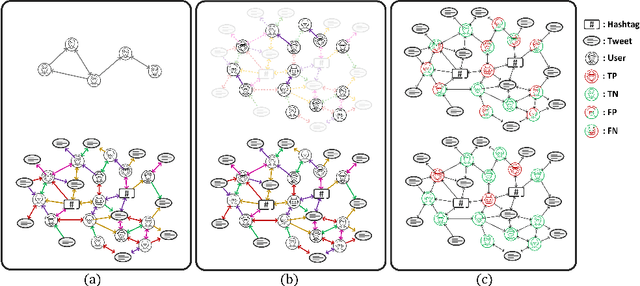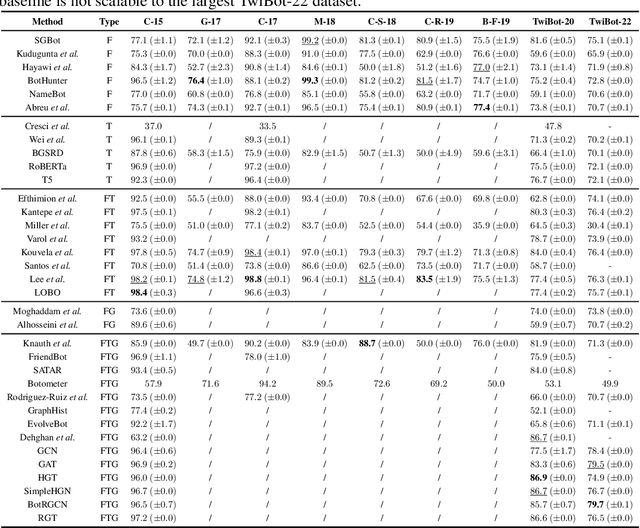Shujie Yang
OneRec-V2 Technical Report
Aug 28, 2025Abstract:Recent breakthroughs in generative AI have transformed recommender systems through end-to-end generation. OneRec reformulates recommendation as an autoregressive generation task, achieving high Model FLOPs Utilization. While OneRec-V1 has shown significant empirical success in real-world deployment, two critical challenges hinder its scalability and performance: (1) inefficient computational allocation where 97.66% of resources are consumed by sequence encoding rather than generation, and (2) limitations in reinforcement learning relying solely on reward models. To address these challenges, we propose OneRec-V2, featuring: (1) Lazy Decoder-Only Architecture: Eliminates encoder bottlenecks, reducing total computation by 94% and training resources by 90%, enabling successful scaling to 8B parameters. (2) Preference Alignment with Real-World User Interactions: Incorporates Duration-Aware Reward Shaping and Adaptive Ratio Clipping to better align with user preferences using real-world feedback. Extensive A/B tests on Kuaishou demonstrate OneRec-V2's effectiveness, improving App Stay Time by 0.467%/0.741% while balancing multi-objective recommendations. This work advances generative recommendation scalability and alignment with real-world feedback, representing a step forward in the development of end-to-end recommender systems.
OneRec Technical Report
Jun 16, 2025Abstract:Recommender systems have been widely used in various large-scale user-oriented platforms for many years. However, compared to the rapid developments in the AI community, recommendation systems have not achieved a breakthrough in recent years. For instance, they still rely on a multi-stage cascaded architecture rather than an end-to-end approach, leading to computational fragmentation and optimization inconsistencies, and hindering the effective application of key breakthrough technologies from the AI community in recommendation scenarios. To address these issues, we propose OneRec, which reshapes the recommendation system through an end-to-end generative approach and achieves promising results. Firstly, we have enhanced the computational FLOPs of the current recommendation model by 10 $\times$ and have identified the scaling laws for recommendations within certain boundaries. Secondly, reinforcement learning techniques, previously difficult to apply for optimizing recommendations, show significant potential in this framework. Lastly, through infrastructure optimizations, we have achieved 23.7% and 28.8% Model FLOPs Utilization (MFU) on flagship GPUs during training and inference, respectively, aligning closely with the LLM community. This architecture significantly reduces communication and storage overhead, resulting in operating expense that is only 10.6% of traditional recommendation pipelines. Deployed in Kuaishou/Kuaishou Lite APP, it handles 25% of total queries per second, enhancing overall App Stay Time by 0.54% and 1.24%, respectively. Additionally, we have observed significant increases in metrics such as 7-day Lifetime, which is a crucial indicator of recommendation experience. We also provide practical lessons and insights derived from developing, optimizing, and maintaining a production-scale recommendation system with significant real-world impact.
GADY: Unsupervised Anomaly Detection on Dynamic Graphs
Oct 25, 2023Abstract:Anomaly detection on dynamic graphs refers to detecting entities whose behaviors obviously deviate from the norms observed within graphs and their temporal information. This field has drawn increasing attention due to its application in finance, network security, social networks, and more. However, existing methods face two challenges: dynamic structure constructing challenge - difficulties in capturing graph structure with complex time information and negative sampling challenge - unable to construct excellent negative samples for unsupervised learning. To address these challenges, we propose Unsupervised Generative Anomaly Detection on Dynamic Graphs (GADY). To tackle the first challenge, we propose a continuous dynamic graph model to capture the fine-grained information, which breaks the limit of existing discrete methods. Specifically, we employ a message-passing framework combined with positional features to get edge embeddings, which are decoded to identify anomalies. For the second challenge, we pioneer the use of Generative Adversarial Networks to generate negative interactions. Moreover, we design a loss function to alter the training goal of the generator while ensuring the diversity and quality of generated samples. Extensive experiments demonstrate that our proposed GADY significantly outperforms the previous state-of-the-art method on three real-world datasets. Supplementary experiments further validate the effectiveness of our model design and the necessity of each module.
Open-TransMind: A New Baseline and Benchmark for 1st Foundation Model Challenge of Intelligent Transportation
Apr 12, 2023



Abstract:With the continuous improvement of computing power and deep learning algorithms in recent years, the foundation model has grown in popularity. Because of its powerful capabilities and excellent performance, this technology is being adopted and applied by an increasing number of industries. In the intelligent transportation industry, artificial intelligence faces the following typical challenges: few shots, poor generalization, and a lack of multi-modal techniques. Foundation model technology can significantly alleviate the aforementioned issues. To address these, we designed the 1st Foundation Model Challenge, with the goal of increasing the popularity of foundation model technology in traffic scenarios and promoting the rapid development of the intelligent transportation industry. The challenge is divided into two tracks: all-in-one and cross-modal image retrieval. Furthermore, we provide a new baseline and benchmark for the two tracks, called Open-TransMind. According to our knowledge, Open-TransMind is the first open-source transportation foundation model with multi-task and multi-modal capabilities. Simultaneously, Open-TransMind can achieve state-of-the-art performance on detection, classification, and segmentation datasets of traffic scenarios. Our source code is available at https://github.com/Traffic-X/Open-TransMind.
AHEAD: A Triple Attention Based Heterogeneous Graph Anomaly Detection Approach
Aug 17, 2022



Abstract:Graph anomaly detection on attributed networks has become a prevalent research topic due to its broad applications in many influential domains. In real-world scenarios, nodes and edges in attributed networks usually display distinct heterogeneity, i.e. attributes of different types of nodes show great variety, different types of relations represent diverse meanings. Anomalies usually perform differently from the majority in various perspectives of heterogeneity in these networks. However, existing graph anomaly detection approaches do not leverage heterogeneity in attributed networks, which is highly related to anomaly detection. In light of this problem, we propose AHEAD: a heterogeneity-aware unsupervised graph anomaly detection approach based on the encoder-decoder framework. Specifically, for the encoder, we design three levels of attention, i.e. attribute level, node type level, and edge level attentions to capture the heterogeneity of network structure, node properties and information of a single node, respectively. In the decoder, we exploit structure, attribute, and node type reconstruction terms to obtain an anomaly score for each node. Extensive experiments show the superiority of AHEAD on several real-world heterogeneous information networks compared with the state-of-arts in the unsupervised setting. Further experiments verify the effectiveness and robustness of our triple attention, model backbone, and decoder in general.
TwiBot-22: Towards Graph-Based Twitter Bot Detection
Jun 12, 2022



Abstract:Twitter bot detection has become an increasingly important task to combat misinformation, facilitate social media moderation, and preserve the integrity of the online discourse. State-of-the-art bot detection methods generally leverage the graph structure of the Twitter network, and they exhibit promising performance when confronting novel Twitter bots that traditional methods fail to detect. However, very few of the existing Twitter bot detection datasets are graph-based, and even these few graph-based datasets suffer from limited dataset scale, incomplete graph structure, as well as low annotation quality. In fact, the lack of a large-scale graph-based Twitter bot detection benchmark that addresses these issues has seriously hindered the development and evaluation of novel graph-based bot detection approaches. In this paper, we propose TwiBot-22, a comprehensive graph-based Twitter bot detection benchmark that presents the largest dataset to date, provides diversified entities and relations on the Twitter network, and has considerably better annotation quality than existing datasets. In addition, we re-implement 35 representative Twitter bot detection baselines and evaluate them on 9 datasets, including TwiBot-22, to promote a fair comparison of model performance and a holistic understanding of research progress. To facilitate further research, we consolidate all implemented codes and datasets into the TwiBot-22 evaluation framework, where researchers could consistently evaluate new models and datasets. The TwiBot-22 Twitter bot detection benchmark and evaluation framework are publicly available at https://twibot22.github.io/
 Add to Chrome
Add to Chrome Add to Firefox
Add to Firefox Add to Edge
Add to Edge